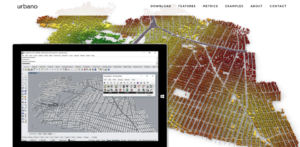The Context:
Researchers at Cornell University have recently launched Urbano – free software that employs data, metrics, and user-friendly interfaces to help planners, developers, and architects in assessing and improve walkability features in the design.
Till today, Architects and planners have always relied on traditional trial-and-error methods, historical data, or specialized simulations while developing walkable neighborhoods. The site analysis techniques can be difficult to accurately incorporate into project planning due to odds with real-time data.
Walkable cities reduce traffic congestion – True. It causes around 3.3 million deaths and $121 billion in economic losses every year, which has to change!
The software was created to allow architects and urban designers to replicate their designs and get feedback early in the process. The site-specific, real-time data allows them to ‘make decisions’ based on facts and data, so they create a sustainable and livable urban environment of the future.

Urbano relies on three metrics to access an area’s walkability:
- Streetscore: Which calculates how streets are used for certain routes.
- Walkscore: A customizable measurement that rates whether popular amenities are within walking distance of homes and workplaces.
- AmenityScore: This considers demographics to estimate the usefulness of various services.
The lead developer of Urbano, Timur Dogan stated: ‘This lets them make decisions based on facts and data, so they can create the sustainable and livable urban environments of the future. Since the launch, Urbano has been downloaded more than 400 times by universities and architecture firms around the world. Urbano has been a product of collaboration between the College of Architecture, Art and Planning’s Environmental Systems Lab.
Using Urbano, it will really be helpful while doing site analysis because then the designers can find out services or amenities missing in neighborhoods or if they are underutilized or overutilized. Walkability makes it more pedestrian-friendly features incorporated into it. As architects/ urban designers automatically consider walkability in their designs, the software will provide simulations backed up by facts and data.
Currently, the researcher’s team is working on a software that assesses energy use in models of cities called, Eddy3d, which will benefit the designers and planners about urban microclimates.
Features if what Urbano enables you to do:
- Download Geospatial Data: Download maps and points-of-interest from OpenStreetMaps directly in Grasshopper.
- Aggregate Data: Parse and import layers of existing state information from OSM or shapefiles.
- Modifying Metadata: Attaches Metadata to the geometric data that can be looked up, modified and customized.
- Builds Mobility Model: Help in creating a topological street network and generating building’s access points to streets.
- Routing in different modes: Finds routes between origin and destination buildings using different transit modes like pedestrians or cars.
- Simulate with Trip engine: Run active mobility simulation for specific buildings using TripEngine.
- Analyze amenities and streets: Computes various metrics in the urban analysis including Streetscrore, AmenityScore, and Walkscore.
- CAD Workflow: Integrates model geometry with metadata to Rhino, wok seamlessly with other visualization components.

Simulating and analyzing:
- Routing: The router component computes the shortest path and returns each trip’s route, distance and travel time with given origins and destinations.
- Accessibility within Distance: By measuring the travel time between the given origin and all other buildings in the model and filtering the results by customized time limits, destinations from original buildings visualized on the maps.
- Trips from Given Origin: It iterates through each given origins and then executes a trip-sending process with calculations of the total population in the origin-building and divides it into activities defined in the ADP-data.
- Streetscore: It is responsive to changes in the network, adding a new link and improving the connectivity leads to different Street Hits on the relative street segments.
- Amenityscore: Adding a type of amenity decreases the hits of other amenities of the same type. A desirable Amenityscore is close to 0, indicating the balance of supply and demand.
- Amenityscore (ADP Time Steps): The ADP data is shipped with Urbano has a 24-hour timeline. The Trip-sending procedures are repeated using the ADP-data for each time step. Simulation results in a representation of overall temporal differences in terms of human and urban activities.
There are some important questions an urban designer needs to consider and it depends on how people interpret the design. It is important that an urban designer or architect shall use the information provided to them by the common people to predict the likelihood of people using the space. We thrive to see development in a manner where the orientation was prioritizing people walking over cars.
To know more about Architecture Technology, Stay Tuned. Till then, you can visit the Security Awareness Section for day-to-day cyber attacks and how to prevent them.

